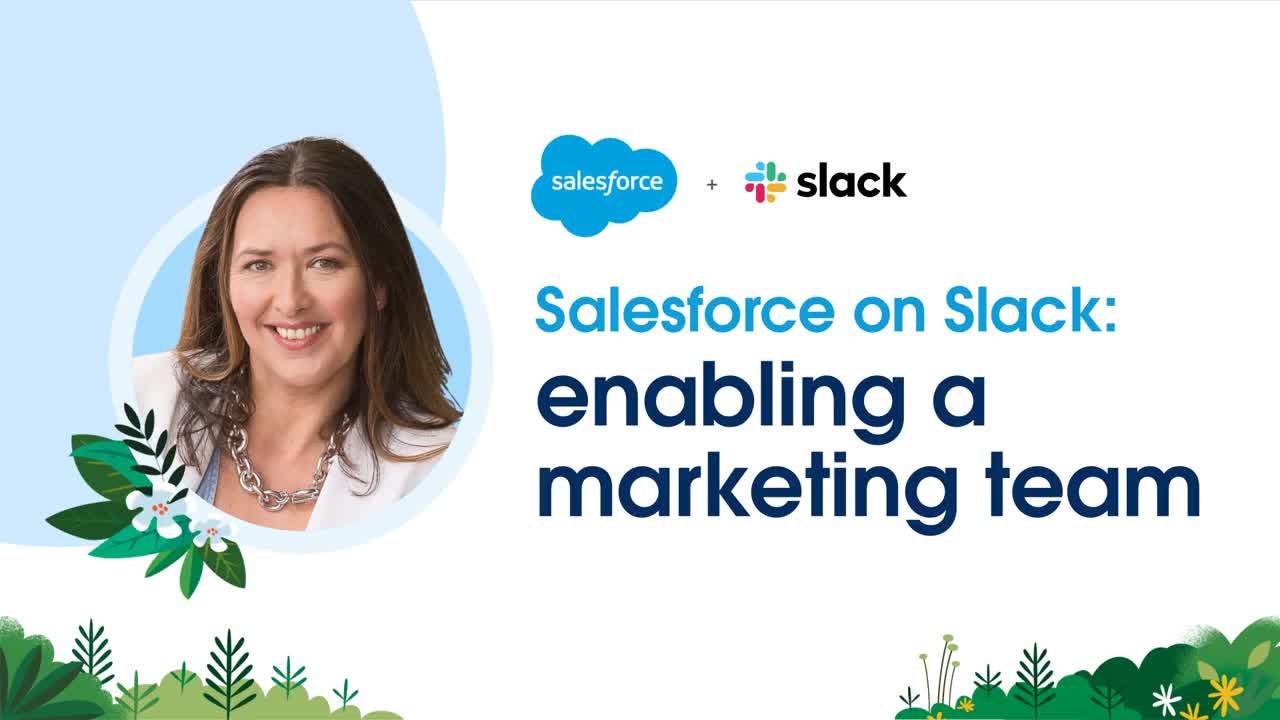What’s next in the market-from-anywhere world?



Salesforce’s latest State of Marketing report confirms that marketers are now seeing the working world through different eyes. Physical separation has brought about drastic change in the way we approach productivity and redefined what we see as successful collaboration. Here, Salesforce’s Head of Marketing A/NZ Renata Bertram digs into what collaboration looks like in the new normal and how leaders can support and enhance it into 2022 and beyond.
If we’ve learned anything from the past 18 months (and we’ve learned a lot) it’s that expectation doesn’t always mirror reality. Around the time of the first lockdown in 2020, marketing leaders scrambled to imagine how collaboration between remote employees would work and the picture wasn’t pretty. Fast forward to now and many could never have imagined just how well we pivoted, came together, and thrived. So much so, that marketers actually feel closer to each other than ever.
Now, instead of underestimating our adaptability, we are casting fresh eyes over recent times, looking at what’s worked and why, and letting both inform our shared journey into a new future. As a marketing leader, I’ve experienced this changing reality first-hand and have explored a few of the key takeaways.
Remembering the human factor in team collaboration
When broaching the drivers of collaboration in the market-from-anywhere world, it’s tempting to launch straight into technology, operations or process. But I think what is often relegated to an afterthought is the human factor.
All collaboration, whether conducted face-to-face or digitally, requires a willingness to connect. To be propelled by that willingness, individuals need to feel a level of trust and respect for their fellow human and the work they are doing. In my opinion, if marketers collaborated well prior to the pandemic they were far more likely to continue working together across digital channels.
Similarly, even with great technology and strategy, the right mindset is also pivotal to successful collaboration. Getting teams to work differently post-lockdown required the curiosity and open-mindedness to tackle change, innovate and give everything a go.
Really connecting to new technologies
Sixty-nine percent of Australian and 79% of New Zealand marketing organisations adopted new collaboration technologies since the pandemic and all signs point to that number growing. Marketing leaders who take a deeply considered approach to new technologies will be at the forefront of adoption.
Using the human factor as a foundation, marketing leaders need to really connect new technology with the employee. It’s not a matter of saying “here’s this platform, please use it”, but rather finding ways to demonstrate to employees why that platform will help them work better and more efficiently. If teams can understand how a technology helps them better address their purpose, they are far more likely to adopt it.
This is where comprehensive enablement comes in – which is essentially using multiple strategies to immerse employees in the new technology. Every individual learns in a different way and at a different pace, so a unique and tailored approach is required if you want everyone to catch on. Learning experiences need to not only be repeated, but from different angles in different formats so that marketers can self-learn. We’re living through a real life case study of this with our recent adoption of Slack.
5 major trends.
Insights from 8,200+ marketers.
All in one report.



Slack and comprehensive enablement
Over the course of the pandemic, we introduced the collaboration platform Slack to our teams. And like any new technology enablement, we took a comprehensive approach similar to the one mentioned above. We predicted that while moving in and out of lockdown, Slack would serve as the perfect tool to connect marketers both at home and in the office, but individuals needed to reach that conclusion themselves.
So, in addition to self learning through Slack Trailhead modules, we also found a way to make it feel more relatable to our marketers. We brought in members of the Slack marketing team to show us how they are using the platform, which very quickly demonstrated how our own marketers could benefit and inspired new ways of working.
Once seeing it first-hand, our marketers were far more interested in engaging with the platform and getting to know its features and benefits. Slack is now ingrained into our way of working and there’s no doubt that our relatable and hands-on approach contributed to the success of its adoption.
Collaborating for the future hybrid workplace
The flexibility imperative that has arisen over the past 18 months requires just as much of a nuanced approach. Most of us know that the hybrid-work model (divided between home and the office) is here to stay, but figuring out how to best support it is an ongoing process.
How are we going to negotiate this paradigm shift? What’s been good about from-anywhere work? What do we want to keep from the in-person experience? For marketing leaders, answering these with honesty is paramount, especially considering marketers are split down the middle when it comes to ways of working (43% expect to work in-office and 49% expect a home/office hybrid).
And to answer these questions, leaders need to take into account the individual marketer.
We need to understand why and when certain individuals want to work from home or in the office. And if you have a team with different needs, there are simple ways to find a balance between ways of working. For instance, you could mark a day during the week where marketers are encouraged to come into the office for face-to-face meetings and workshops, then another day that’s meeting-free – which makes a great work from home day. At Salesforce, we have meeting free Fridays and the team loves it.
Collaborating with other departments
The flexibility imperative also raises questions when it comes to working with other teams, as echoed by the State of Marketing report, which says that marketers feel less connected to colleagues in other departments. Previously, when all departments occupied the same physical space, it was far easier for a marketer to run something by a member from a different team, such as sales, as all it took was a few steps and an informal chat, or a spontaneous five-minute sit-down in a meeting room.
Now, with both teams and individuals spread out and schedules less aligned, it’s easier for departments to —unintentionally as it may be— end up less connected to each other, even if members within individual departments are collaborating at high levels. In order for marketers to get that cut through to other departments, innovation is required. For example, when it comes to cutting through to sales, it might be helpful to forge new connections with a similar approach as when connecting with a customer – using forethought and empathy.
One thing’s for sure, there’s no one method of facilitating collaboration in the market-from-anywhere world. Multiple challenges require multiple approaches.
Get the full picture on how marketers are embracing the market-from-anywhere world by downloading the latest State of Marketing report now.
5 major trends.
Insights from 8,200+ marketers.
All in one report.


























